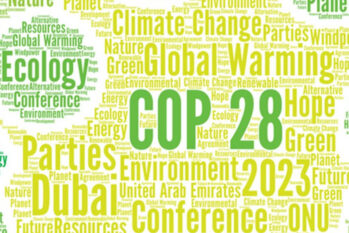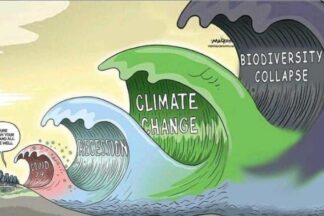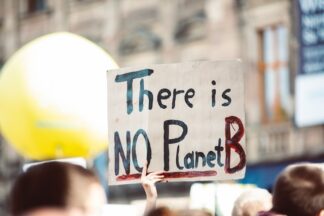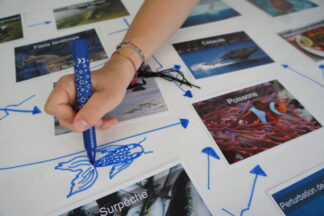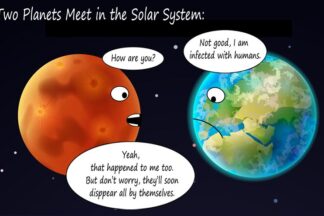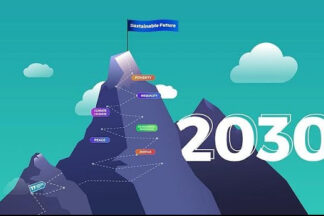COP28 yielded mixed results, featuring some historic 'firsts' such as a fossil fuel phase-out commitment, a $700 million loss and damage fund, the recognition of nuclear energy, and (this is huge!) a pointed spotlight on food systems' role in adaption.
Most of the old challenges though remain: It's all carrots and no sticks. Which shows in the continued absence of enforcement of Climate Targets or their stringency, and the eye-level conversation with Global South nations.
Governments as well as legal persons such as companies are undoubtedly important players in this whole societal shift towards climate mitigation and adaption. When it comes to corporates though, and notably stock quoted companies, there is a group of people that is most prominently exposed in regards to the legality and societal ‘license to operate’ of a company: the Board of Directors (BoD). The question hence for this blog post is: How is this climate litigation business shaping up to affect the Board of Directors of publicly listed companies?
Governments are undoubtedly important players in this whole societal shift towards climate mitigation and adaption. Equally important though, and by the argument of some possibly even more important: companies, the corporate world.
The largest number of cases on a global level are brought forward against governments. But about a forth of all cases are filed against corporations. This is not negligible - and, maybe more importantly, a number on a brisk raising trajectory.
The question hence for this blog post is: How is this climate litigation business shaping up to affect corporate players?
Litigation, going to court, is by definition not a fun business. And yet, in this 2023 several Climate Litigation cases have already caught the headline – and many more are in the makes.
Among all the court cases, one particular case sticks out like – depending on the political viewpoint – either a lighthouse of hope, or a sore thumb: Urgenda vs Government of the Netherlands.
In this blog post we dig deeper into this case:
Who was going to court against whom? And why exactly? How come the plaintiffs won? And: is this just a one off local phenomenon in the Netherlands?
In the last post I wrote about one of the most historic inter-governmental landmark decisions: At the ‘Biodiversity’ COP (COP15) 200 countries had agreed on 4 Goals and 23 Targets.
It goes without saying though that the interesting piece is the enforcement and implementation mechanisms of the mentioned agreement.
Hence, the focus of this article is: How exactly – if at all – will the goals and progress measures reached in December 2022 be enforced and tracked?
In time for Christmas, one of the most historic inter-governmental landmark decisions hit the headlines: The 'Biodiversity' COP (COP15) had actually achieved 'something'. 200 countries had agreed on 4 Goals and 23 Targets. Some of those are a bit more concrete than others, the headline goes roughly like this: “By 2030: Protect 30% of Earth’s lands, oceans, coastal areas, inland waters; Reduce by $500 billion annual harmful government subsidies; Cut food waste in half.” A closer look at precisely those 23 Targets and the specificity of the measures they contain.
Do you know these feelings? Outrage at the lack of action of friends and colleagues in the face of climate science data; fatalism when thinking about the future the next generation (and the one after); optimism in those few moments when joining up with like-minded people that do what they can do change the course of current events around; and helplessnesses when despite all efforts the bigger is just frozen.
But we have a choice of which emotions to live in order to create change. Choose now!
Did you ever wonder, how the New Climate Changed reality could look and feel like at its worst?
Then, we may right now be getting a flavour of exactly that.
Ukraine's resource richness may be an important variable in a globalised world that will increasingly be struggling to access necessary resources in the decades to come. Because, after all, and as we learned when we played monopoly: Whomever controls the resources controls the game.
Ever since my first steps in the world of ‘making sustainability happen’, one of the questions I most frequently get to hear is: ‘how is this relevant to [insert your preferred corporate or private authority person].
It is a valid question. But not an easy one to answer. And certainly not new.
It is a questions has been tackled in 3 ways:
Well illustrated and visually attractive presentations; Gamification approaches; and resources that help take relatively easy and simple steps that, cumulatively, make a difference.
Here hence a list of tools and approaches that intent to motivate, create urgency, and inspire action.
Pricing the ton of carbon is a key matter – more so as an increasing number of companies aim at publicly claiming carbon neutrality. Carbon hence has a price – and this raises the much discussed question: What is a fair (or better: ‘correct’) price for carbon?
In this post I present a glimpse of some of the challenges and realities related to the topic.
It leaves us with the question: What went wrong in the current system that fundamentally asks us to choose between having to monetarily price natural and societal resources, and a fair, equitable access to these resources specifically for hard hit communities?
The question alone should not be even asked.
And yet it seems that’s what we’re left with given the current time and age.
As companies and countries around the world pursue net zero targets, one big question is: How do you ensure the carbon removal technologies we will need 20 to 30 years down the road are available, affordable and easily scaled?
S&P Global recently published a podcast mini-series on emerging climate technology.
The series not only introduces a range of much hyped about, CO2 saving or CO2 removing technology, but also looks at scaling, the truth of potential impact, and financial viability.It is for this reason that I would like to list the three episodes in this post – and invite everyone to spend the 3 x 20 minutes to wrap their head around these insights.
Measuring Biodiversity, in terms of baseline (status quo), progress, and deliverable targets, is not a simple thing. Collateral damages are a serious risk.At the same time though, some companies use outcomes of tools, which where never intended to deal at all with biodiversity, as proxy vehicles. This of course raises the question: Where are we with tools, programmes, and measurement systems for biodiversity? Hereafter a look across what I found to be having (some) teeth - also in comparison to the more popular climate change topic. These are: TNFD, SBTN, as well as two management tools that might be helpful, FFFBB and BIA.
Ask: If you are aware of others initatives 'with teeth' as of of writing (November 2021): do let me know and I’d be happy to list them also. Thank you!
Textile Exchange recently launched their (first ever) Biodiversity Insights Report. In itself not a bad idea per se – after all, assessing the staus quo of things is at least a baseline – the report is indeed ‘insightful’ in a number of ways. Most importantly: it raises a lot of questions. Such as:
If predominantly large companies are such laggards in all things biodiversity - can you imagine the situation in companies with much less resources? And why are entirely inadequate tools used to measure biodiversity? Are the commitments not just a rehash of climate committments, that only very recently start to show teeth and results?
In the last post I explained what COP15 is: A conference with the main purpose to adopt the post-2020 global biodiversity framework. But: What exactly is the framework agreement? What does it cover and encompass? Does it offer similar KPIs such as the SDG indicators? Are there enforcement mechanisms? Assuming for a moment, that it will be adopted: what would, or could, that tangibly mean going forward? Here a try at answering these questions.
While the relevance and criticality of COP26 is hammered home in the global media, the news reporting on COP15, as an effort possibly and reality more important than its Scottish climate conference peer, was rather subdued and unspectacular.
Let’s therefore get the most context-relevant questions straight out of the way: What is COP15? And why are there two COPs? And what has biodiversity to do with it?
Europe is, no doubt, a checker board in regards to environmental (and other) legislation and jurisprudence.
While the European Union is is hammering out the different fence poles related to its Green Deal and Green Taxonomies some other countries run ahead with their own locally applicable laws.
One law that is considered 'innovative' since its publication - the French 2019 Law on Energy and Climate, and its 2021 implementing decree - are worth a somewhat closer look. These pieces of law focus - once more - predominantly on financial industry players and reporting. The innovative part is the explicit inclusion of Biodiversity impact reporting. What are the bets of them beeing at the root of change?
The finance industry does have its share to play in a ‘just transition’ to a low carbon and more ‘doughnut-ty’ economy. This is a given. I have written repeatedly about it.
In most contexts, the finance industry is characterised and promoted as a ‘driver’ of said transition. But is that really so? After all, the by far and distant most frequent tenor in ESG (the finance industry’s term for all things ‘sustainability’) is predominantly about risk. With that in mind, let's tell it as it is: The finance industry’s ESG discourse is opportunistic. As indeed all it’s actions and views have been, and as indeed the the industry’s clockwork is set out to be and function. Opportunistic.
Media hell broke loose when Greta Turnberg a few days ago dared to mock global politicians with her ‘blablabla’ speech. Personally, I thought it was time for celebration. I envy her boldness, her fearlessness.
Because we all know: she’s right. Very, very, right.
Sadly, in Greta’s shadow Vanessa Nakate went unappreciated: she made a very good point about social inclusion to achieve the energy transition.
I raise a glass to both of these ladies!
Watch their speech in full.
P.S: the only two note worthy responses - from Italy, strange as it may sound ...
Most companies have had a brush with sustainability (or it’s finance industry lens: ESG) at the very least on an operational level. Not necessarily always voluntarily or out of conviction, mind.
Looking at corporate boards however, the picture starts to change – not necessarily to the better. While boards of listed companies may have been forced to look at non-financial disclosure, it is rare that any board has a sound grasp, never mind approach, to all things ESG and sustainability.
This is why I list in this post the few tools I am aware of that are specifically targetting and intended to help corporate boards start on the journey towards becoming climate and SDG savvy.
Most recently I read Ed Gillespie' blog post about the 'Omerta of Consulting' - specifically aimed at sustainability consultants like myself. He makes a very valid point in what he says, and he gives a compelling example of how Scope 3 ('impact of products sold') should be be the one and only KPI that we would be measured against.
He's right. At least in principle.
But what about all those companies - many of which are SMEs - that are still struggling to even get on the bandwagon of understanding proper sustainability KPIs and their measurement? What is the better - for the climate and society - approach: trying to get them on the bandwagon, or just let them be?

